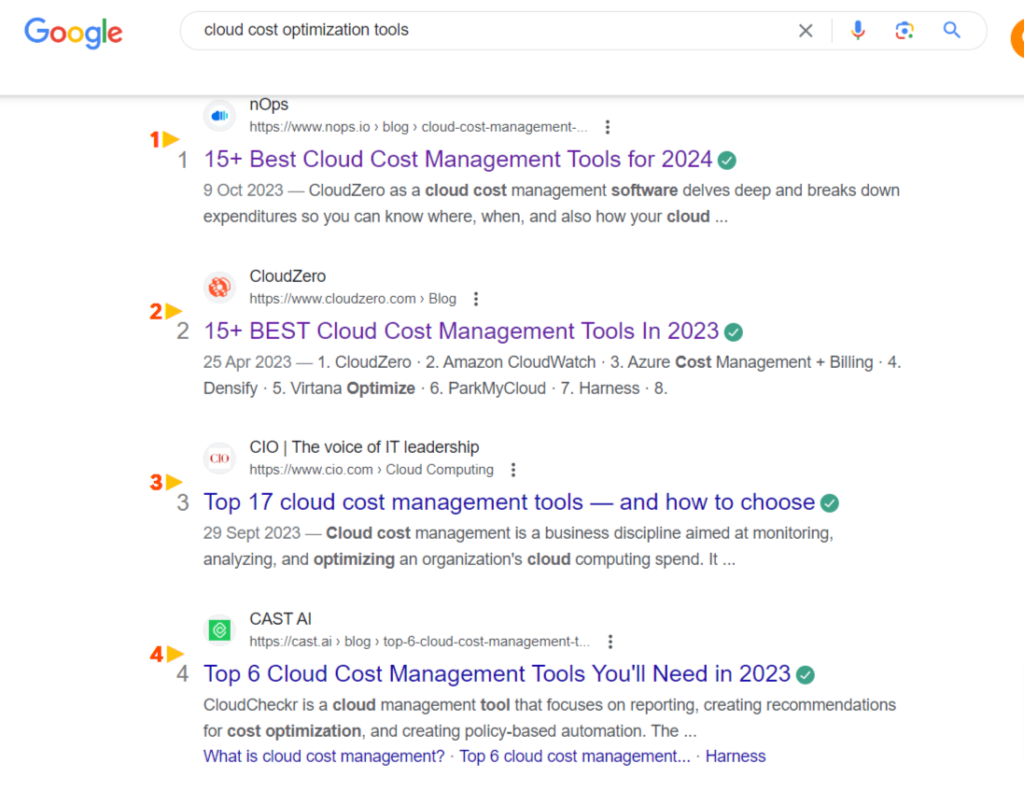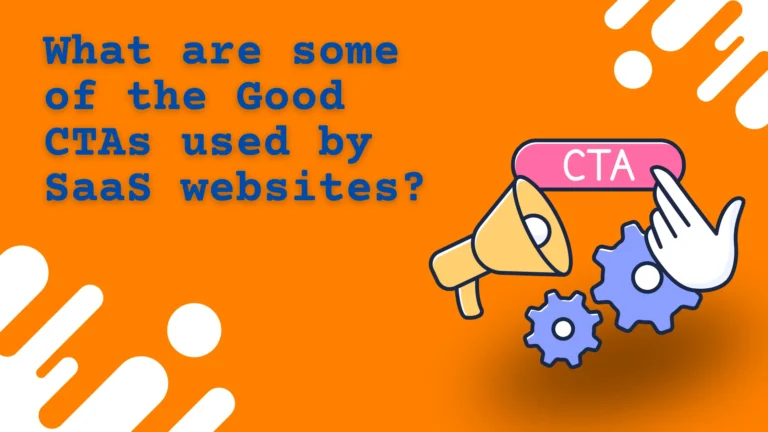Have you ever searched for any SaaS tools on Google? Which type of content has appeared at the top of the organic search results? You’d have surely noticed listicle blogs whose headlines say something like this – 7+ Best … Tools in 2024. So, these are the listicle blogs that include a list of something.
In the listicle blog, you have to write about a list of some items for the topic you want to write on. You can write a brief or comprehensive description of the items, including their features, pros and cons, pricing, own experience and reviews of the same.
Main Reason for Writing Listicle Blog for SaaS Keyword you want to rank for
In many instances, especially in the cases of tools, Google prefers to rank listicle blogs which contain a big list of items with helpful content that can help readers make buying decisions. Because, mostly those people searching for such keywords have the intent of buying or in the research phase before buying. So, Google understands this and rather than showing any specific website’s landing page that is optimized for that keyword, it ranks a listicle blog post. Also, note that oftentimes people search in plural search terms rather than single search terms while researching about any products because almost all buyers research about the SaaS products.
Below is a screenshot of the search result for the query “cloud cost optimization tools” and you can see that all top-ranking results are listicle blog posts that contain n numbers of tools. DISCLAIMER: The 1st ranking website is my client’s website. ;D. No, I’m not doing a show-off of my SEO results, just informing.

Strategy for writing Listicle Blog for SaaS Keyword you want to rank for
To write such articles, you need to follow some SaaS SEO best practices which I’m going to explain you here-
1. Keywords Research Phase
Before you proceed with this SaaS SEO strategy, you need to have keywords ready for the war you want to win. If you haven’t yet selected the right keywords you want to rank then worry not I’ll help you with that. If you have already found the right keywords then you may skip this part.
If you are marketing a SaaS tool then you already know what people call it in general, for example – AI Writing Tools, Cloud Cost Optimization Tools, Talent Management Tools, etc. Mostly these are your keywords. You can do more in-depth research about the popularity of these tools using keyword research tools like Semrush and Ahrefs. Put in the keyword and it will show the search volume and other related information like CPC, Keyword Difficulty(Don’t take the KD seriously), etc.
You can research about what are other variations of the keyword. In this way, you will have an idea about what are the search terms people use to find such tools.
There is another best way to find the best keywords you should be targeting. On Google, search for the keyword and pick the top most organic ranking page and put its URL in any SEO tool to discover the keywords that page is ranking for. In this way, you can identify what top keywords are bringing most of the traffic to that page.
2. Data extraction of top-performing pages
After you know what keywords you want to target, it’s time to do the competitors’ research. If you do not understand your competitors then you can’t outrank them. This quote was said by legendary SaaS SEO Consultant Chinmay Mahanta. ;p.
Head on to Google, search for the keyword and then extract all the top 10 organic ranking page URLs and put them on a sheet. Extract their Title, Meta Description, Word Count, and H1 through the Screaming Frog SEO Spider tool.
Then note down how many no. of items they have mentioned in their blog.
This is important because Google prefers to rank long lists. But wait, only a long list is not important, content density and quality is also important. The more in-depth content you write about each item mentioned, the better the chance of ranking.
Note down what those top-performing pages have added to their content. Like, a brief description or comprehensive, features, pros and cons, pricing, review, etc.
3. Research about the items/ SaaS products you want to write about
Before you proceed to start writing about the n number of tools, learn about those tools in detail so that you can write as much as you can and make it comprehensive. Learn about their features, pros and cons. Go through others’ blogs and understand about what they have written about those tools. Go to review aggregator websites like G2 and Capterra to understand what people are saying about these tools, you will find a good list of tools or your competitors on those websites.
4. Get Ready to Write
Now you are ready with all the things you need with all research reports, DNA data, Historical Performance statistics, and Astrology reports about those tools. It’s time to write and write better than existing blogs for such keywords on the internet.
10 SaaS SEO Best Practices for Listicle Blogs
- Write a long list of items.
- Include as much information as you can about those items.
- Features, Pros, Cons and Pricing are must.
- If possible, provide your own review
- Don’t forget to add images or screenshots about each item.
- Write a good title that can improve the chances of clicks and improve the CTR.
- You can keep the H1 heading same as title. If you want to modify for any reason then don’t change a lot because these days Google is changing the Title and instead showing H1 as title, so the importance of H1 is too high. Must include the primary keyword in H1
- Optimize images perfectly. If you are adding screenshots then keep the file name as – screenshot-of-xyz-tool.webp, and alt text as “Screenshot of XYZ tools”. There are many other image optimization techniques available like compressing the image size and use next-gen image formats like WebP and AVIF.
- Include the Author’s Name with a good Author Bio.
- Your blog should display the Last Updated date and Published Date. The last Updated date is important because Google displays this date on search results. In the absence of the Last Updated date, Google will show the Published date. Note down that, people will prefer to click on a recently written blog than an old one. That’s why keep updating the blog so that you have a recent Last Updated date.
- You can add internal links to other blogs and external links to the websites mentioned on the list. Now you will ask is it good to give dofollow backlinks to our competitors. That’s your choice to add nofollow on those links so that you don’t help your competitors with a backlink. But remember, a dofollow is a natural link while nofollow is used in those cases where you do not want to associate your content with the linked websites. So, it’s okay to link to your competitors’ websites. Google will be able to understand that your website is similar to those websites.
So, that’s all from this SaaS SEO Strategy. If you are running a SaaS business then don’t miss to check my SaaS SEO Checklist which will help you to build an entire SEO strategy for your SaaS business.




